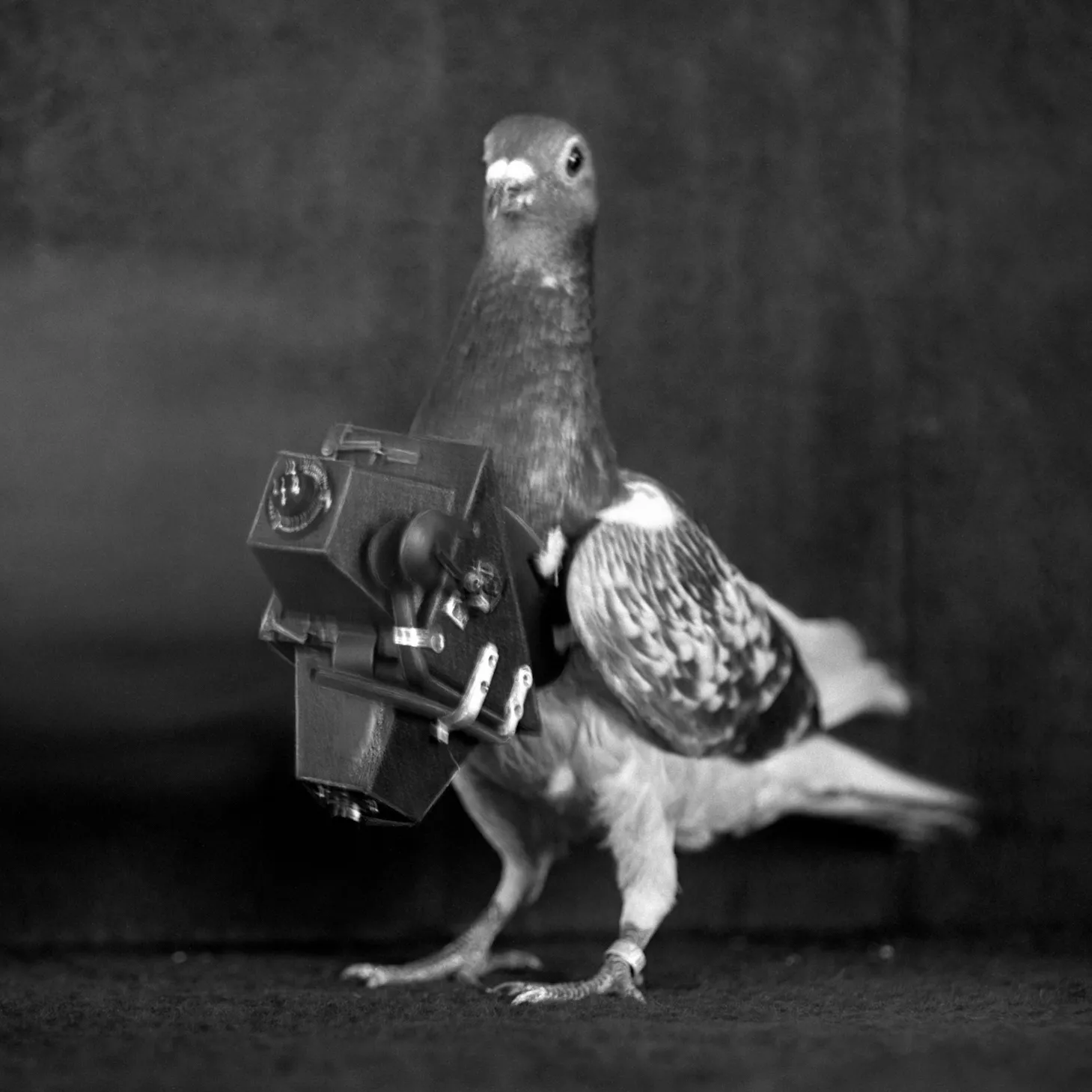Homing pigeons are perhaps one of the oldest - and cutest - forms of long distance communication. They have been used for carrying messages and post for thousands of years, dating back to the first major civilizations.
 |
| Pigeon with a camera for aerial photographs |
The usage by the Egyptian military began a long and continuous trend in the usage of homing pigeons by many other major civilizations and conquerors, such as Genghis Khan of the Mongol Empire and Julius Caesar of Rome. Pigeons brought message of the Olympic games winners and delivered messages of military victory and defeat.
Pigeons may also be responsible for the Rothschild family's fortune. Following the battle of Waterloo, the legend says that the Rothschild's were some of the first to know of Napoleons defeat, allowing them to make significant wealth in the following days via the stock market. The Rothschild's pigeon post is the reason the family has risen to such prominence as it delivered the message so quickly, though this is only legend.
 |
| Soldiers releasing a pigeon |
Perhaps usage of homing pigeons peaked during the second World War, with Great Britain alone using roughly 200,000 birds. Several pigeons were even awarded medals from their service in WW1 and WWII. One of these birds, Cher Ami, was awarded the Croix de Guerre medal for delivering a message that saved the remains of a battalion in WWI.
War pigeons were also in a proposed missile design during WW2. These missiles, part of Project Pigeon, contained a pigeon that would control the missile via pecks. The pecks would be directed at a screen that showed the target, keeping the missile accurate until collision. The project was fortunately dropped as it was rendered impractical.
As technology progressed throughout the next hundred years, homing pigeons became increasingly obsolete, especially with the rise of the internet. However, they are still used in traditional manners and hobbyists.
In the twenty-first century, pigeons are not completely obsolete. In 2009, a company in South Africa tested the data transferring speed via internet vs pigeon. For this test, the company attached 4 gigabytes of data to the pigeon which delivered the hard drive in a little over an hour. In that time, the computer was only able to upload %4 of the data due to the internet.
In 2023, a YouTube creator looked at this experiment and ran his own version. For this experiment, he used 4 terabytes rather than 4, and only tested the pigeon for an hour. In his video, he explains that pigeons would be faster than the internet but only to an extent, limited to 500 miles. This shows that although pigeons have been outdated by nearly every other communication technology, there is still a place for them in today's society as the worlds cutest communication technology.





No comments:
Post a Comment